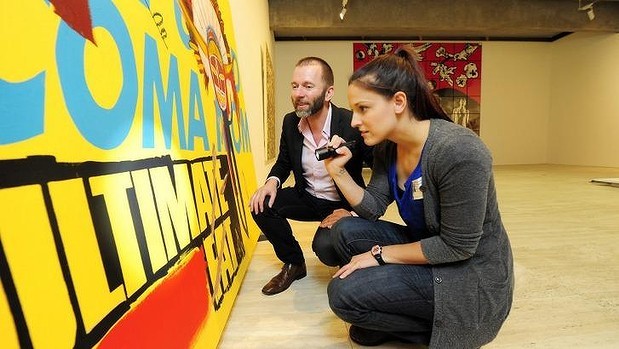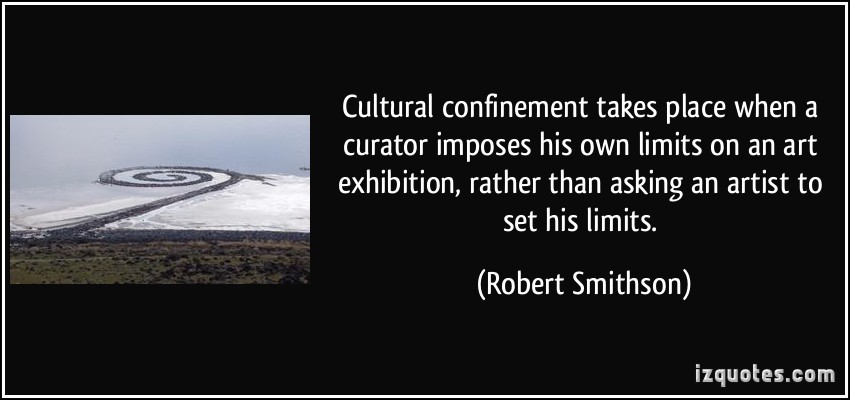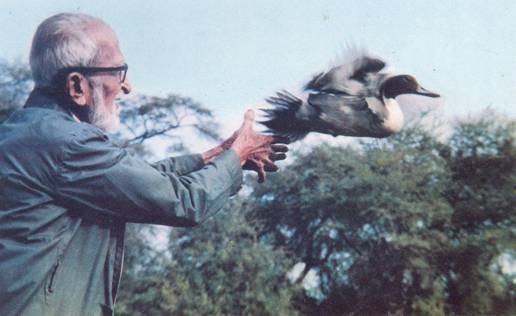What is a curator?
 A nation which has conserved art such as paintings, literature, monuments, architecture, is in true sense a rich country. Protection and care of tangible cultural heritage includes artwork, architecture, archaeology and museum collections. Conservation activities include examining documentation, treatment, collection and care. As a technical discipline, conservation of cultural, natural and historical heritage is supported by curators with help of conservation science. This science encompasses research concerning materials, design, techniques, and aesthetics, and restoration activities. Thus, for maintenance of rich heritage a curator is significantly required.
A nation which has conserved art such as paintings, literature, monuments, architecture, is in true sense a rich country. Protection and care of tangible cultural heritage includes artwork, architecture, archaeology and museum collections. Conservation activities include examining documentation, treatment, collection and care. As a technical discipline, conservation of cultural, natural and historical heritage is supported by curators with help of conservation science. This science encompasses research concerning materials, design, techniques, and aesthetics, and restoration activities. Thus, for maintenance of rich heritage a curator is significantly required.
And, what is a curator? A curator is a manager or overseer who is content specialist responsible for a gallery’s museums, a library’s or archive’s heritage material. The object of a traditional curator’s concern necessarily involves tangible objects of some sort, whether it is artwork, collectibles, historic items or scientific collections. A curator requires multi-tasking as the job entails being responsible for a museum’s collection, selecting skill to be displayed in a museum, organizing exhibitions in galleries or public spaces, researching, plus writing catalogue essays. Besides this the curators need to work on administrative tasks such as figuring out exhibition budgets, fund-raising, applying for grants, and overall administration. Rich and prominent families also preserve and tell stories of their unique and glorious histories, and thus they also need curator’s assistance.
 Typically, curators acquire, store and exhibit collections. They select the theme and design of exhibitions. Develop or set up exhibit materials. Design, organize, or conduct tours to workshops for the public. Promote the institution. Keep the object dirt free and maintain them. Direct and supervise curatorial and technical staff. Plan and conduct special research project. Curators manage museums, zoos, aquariums, botanical gardens, nature centers, and historical sites. A career as a curator is an excellent choice for individuals with a strong interest in the management of a variety of museum collections. Curators must have a solid understanding of museum studies and the care of a variety of valuable historical items. Manual dexterity, flexibility, determination, and critical thinking are necessary characteristics. They should be highly imaginative with an eye for detail. They must also have excellent planning and negotiation skills when working with other museums to borrow objects.
Typically, curators acquire, store and exhibit collections. They select the theme and design of exhibitions. Develop or set up exhibit materials. Design, organize, or conduct tours to workshops for the public. Promote the institution. Keep the object dirt free and maintain them. Direct and supervise curatorial and technical staff. Plan and conduct special research project. Curators manage museums, zoos, aquariums, botanical gardens, nature centers, and historical sites. A career as a curator is an excellent choice for individuals with a strong interest in the management of a variety of museum collections. Curators must have a solid understanding of museum studies and the care of a variety of valuable historical items. Manual dexterity, flexibility, determination, and critical thinking are necessary characteristics. They should be highly imaginative with an eye for detail. They must also have excellent planning and negotiation skills when working with other museums to borrow objects.
A good curator is generally empathetic towards his work. He should empathize with thoughts of the visitors to the center. Why they are visiting and what do they expect, their love for the area of work needs to be respected and appreciated.
In India, several artists have started turning curators and that’s a good thing because they understand aesthetics better. It is sad that we have not been able to take care of our rich heritage because we have not been able to encourage independent curators to come forward.
In smaller organizations, a curator may have sole responsibility for acquisitions and even collections care. The curator is supposed to decide regarding what objects to take, oversee their potential and documentation, conduct research based on the collection and history, provide proper packaging of art for transportation, and is supposed to share that research with the public and community through exhibitions and publications. They usually are appointed by the museum for a reasonable pay.
In larger institutions, the curator is appointed as a subject specialist. Such institutions can have multiple curators, each assigned to a specific collecting area e.g., Curator of Ancient Art, Curator of Prints and Drawings, Curator for numismatics etc. and they often operate under the direction of a head curator. In such organizations, the physical care of the collection may be overseen by museum collections managers or museum conservators, and documentation and administrative matters such as insurance and loans are handled by a museum registrar.
More recently, advances in new technologies have led to a further widening of the role of curator. This has been focused in major art institutions internationally and has become an object of academic study and research.
 In contemporary art, the title curator is given to a person who selects and often interprets works of art. In addition to selecting works, the curator often is responsible for writing labels, catalog essays, and other supporting content for the exhibition. Such curators may be permanent staff members, there are “guest curators” from an affiliated organization or university, or there are also “freelance curators” working on a consultant basis. The late twentieth century saw an explosion of artists organizing exhibitions. The artist-curator has a long tradition of influence. Notable among these was Sir Joshua Reynolds, founder of the Royal Academy, London.
In contemporary art, the title curator is given to a person who selects and often interprets works of art. In addition to selecting works, the curator often is responsible for writing labels, catalog essays, and other supporting content for the exhibition. Such curators may be permanent staff members, there are “guest curators” from an affiliated organization or university, or there are also “freelance curators” working on a consultant basis. The late twentieth century saw an explosion of artists organizing exhibitions. The artist-curator has a long tradition of influence. Notable among these was Sir Joshua Reynolds, founder of the Royal Academy, London.
Curators generally hold a higher academic degree in their subject, typically a PhD (Doctor of Philosophy) or a Master’s degree in subjects such as History, Archeology, Anthropology or Classics. Curators contribute greatly to their academic field by delivering talks in seminars and workshops, guiding the students in those subjects, and by publishing articles or presenting at specialist academic conferences. It is important that curators have knowledge of the current scenario in their respect areas in markets, collecting market for their area of expertise, and are aware of current ethical practices and laws that may impact their organization’s collecting. I wish to list here some great curators in the world.
Robert Hooke was a Renaissance man – a jack of all trades, and a master of many. He wrote one of the most significant scientific books ever written, ‘Micrographia’, and made contributions to human knowledge spanning Architecture, Astronomy, Biology, Chemistry, Physics, Surveying & Map Making, and the design and construction of scientific instruments. Hook became a scientist at the age of 20. He contributed greatly to the field. His abilities in working with mechanical instruments had become very refined, and he secured work in Oxford as an assistant to one of the founders of modern chemistry in 1662, at 27, Hooke was appointed as Curator of Experiments for the newly founded Royal Society, whose purpose was to advance scientific understanding of the world.
John R. “Jack” Horner is an American paleontologist (a person who studies fossils) who discovered that some dinosaurs cared for their young. He is one of the best-known paleontologists and a curator in the United States. In addition to his many paleontological discoveries, Horner served as the technical advisor for all of the film ‘Jurassic Park’ and even served as partial inspiration for one of the lead characters, Dr. Alaln Grant.
 Sálim Moizuddin Abdul Ali was an Indian Ornithologist and a naturalist. He is sometimes referred to as the “birdman of India”; Salim Ali was among the first Indians to conduct systematic bird surveys across India and his bird books helped develop ornithology. He became the key figure behind the Bombay Natural History Society after 1947 and used his personal influence to garner government support for the organization, and was the man behind the creation of the Bharatpur bird sanctuary. He is the best known curator in ornithology.
Sálim Moizuddin Abdul Ali was an Indian Ornithologist and a naturalist. He is sometimes referred to as the “birdman of India”; Salim Ali was among the first Indians to conduct systematic bird surveys across India and his bird books helped develop ornithology. He became the key figure behind the Bombay Natural History Society after 1947 and used his personal influence to garner government support for the organization, and was the man behind the creation of the Bharatpur bird sanctuary. He is the best known curator in ornithology.
Ananda Kentish Coomaraswamy was a Ceylonese Tamil philosopher and metaphysician, as well as a pioneering historian and philosopher of Indian art, particularly art history and symbolism, and an early interpreter of Indian culture to the West. In particular, he is described as “the groundbreaking theorist who was largely responsible for introducing ancient Indian art to the West. He was a brilliant curator.













































